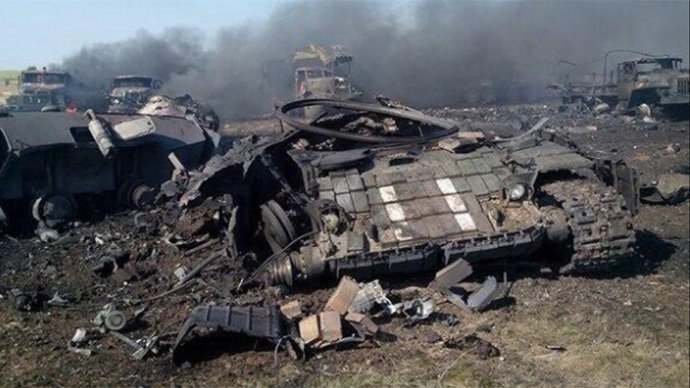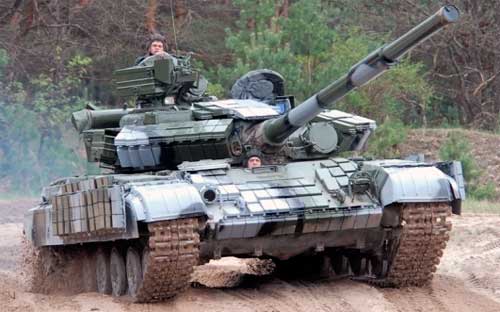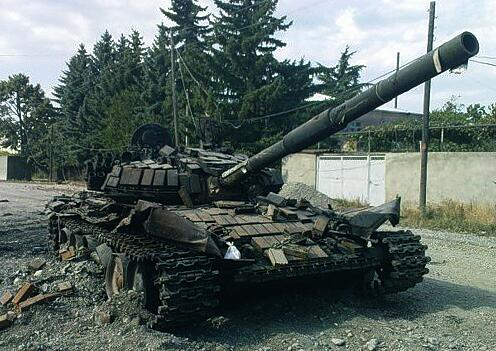Reashot Xigwin
SENIOR MEMBER

- Joined
- Oct 20, 2012
- Messages
- 5,747
- Reaction score
- 0

Reactive armor does not help Ukrainian tanks

Dynamic protection in most cases does not work
Detached tower tank with quiescent explosive reactive armor
At the end of the 1950s at the Moscow Research Institute of Steel under the leadership of Bogdan Wojciechowski developed the first examples of dynamic tank protection from the cumulative jet. In the mid-60s had a similar development in the German research engineer Manfred Held, and in 1982 the dynamic elements of protection have been installed on the first Merkava.
Dynamic protection of the second generation that emerged in the second half of the 1980s, began to be used not only against the cumulative jet, but also against kinetic munitions.
On the Ukrainian tanks installed elements DZ type "Contact", developed in the 70s. Constructively such reactive armor elements are metal boxes weighing 137 kg and the dimensions of 251.9 to 131.9 mm, which is placed 280 grams of explosive.
However, the development of reactive armor put forward strict requirements for insensitivity to fire means not threaten the armor of the tank, such as bullets, shells, small-caliber guns, artillery shell fragments.
Therefore, the charges of explosives, which are filled with explosive reactive armor, had Phlegmatized. This gave rise to the problem of insufficient sensitivity of these elements at the initiation of low-speed kinetic projectiles and even some types of cumulative munitions such as grenades the RPG.
Moreover, 10 years after the manufacture of explosives phlegmatizing it so that does not explode even at undermining TNT blocks.
The problem of failure DZ our tanks encountered during the Chechen campaigns. Therefore, our designers and began anew to find a solution to this problem.
It was solved only in Russia with the advent of dynamic protection 3rd generation "Relic", taken into service in 2006, established by Russian tanks T-72B2 "Slingshot" T-90cm.
In it the problem of protection against actuation in contact with non-hazardous for tank ammunition solved simply: explosive charge located behind a thick barrier, impenetrable fields, small-caliber projectiles and shrapnel .
Therefore Phlegmatized explosives in the "relict" is not necessary. Unfortunately, the "Relic" is established only to new tanks.
At the same Ukrainian tanks, as shown by the recent fighting, dynamic defense in most cases, does not work: the newest boxes made in 1991. Therefore, we can contemplate with tanks exploded ammunition, and explosive reactive armor intact.

Rating @ Mail.ru
Ngambil dr Kaskus: Reactive armor does not help Ukrainian tanks | Kaskus - The Largest Indonesian Community






 Just because Pakistan uses them?
Just because Pakistan uses them?


